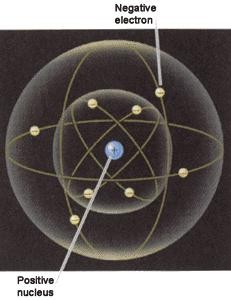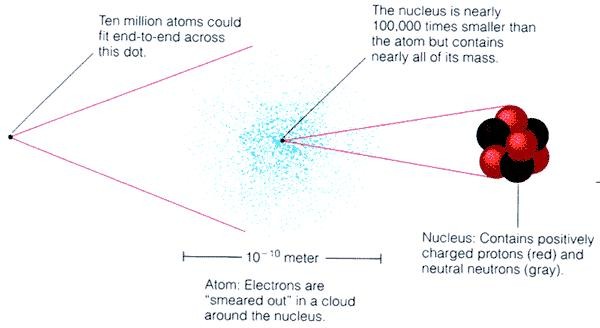 Thanks: 0
 Likes: 0
 Dislikes: 0
-
Waxes attract less dust than others?
I keep getting dust on my car soon after I wash and wax.
Last week I paid someone to detail, clay and liquid wax.
There is construction nearby; hope they'll be finished soon.
I hose the cars down and that helps but it gets me to wondering the answer to the above question.
My locations is south Florida.
-
Super Member

Re: Waxes attract less dust than others?
You should look into a product called Permanon. It's unique chemistry repels dust.
-
Re: Waxes attract less dust than others?
Wolfgang Fuzion and Natty's waxes attract less dust than others. The Fuzion attracts the least dust of any wax I have tried, however, I don't know if it repels dust like the Permanon that richy mentioned.
-
Junior Member

+1 on fuzion great look with minimal dust attraction compared to other lsps ive used
Sent from my DROID RAZR using AG Online
-
Super Member

Re: Waxes attract less dust than others?
After your wax-film-layer has received its proper: Final Buff<<<(M.P.)...
-Go to the fridge and retrieve first: A cold beverage. Next on the agenda:
Grab ahold the spray-bottle that's filled with chilled distilled water.
-After quenching your thirst somewhat...
Return to your vehicle and proceed to apply a mist, from the aforementioned spray
bottle, to a panel, and gently remove the cold-mist with a waffle weave MF towel.
Keep in mind: The less the friction...The better.
-When finished with that panel, move on to another, then another, etc...
until the entire vehicle has been similarly coldly-misted/gently wiped.
Voila!!
Your vehicle has been transformed into a: Less of a Dust Magnet.
(Repeat 'down the road', when necessary, with a:
Chilled-QD-spray-misting/WW-MF-toweling Process, instead)

Bob
"Be wary of the man who urges an action in which he himself incurs no risk."
~Joaquin de Setanti
-
Super Member

I'm not a wax guy primarily because of the car looking like a dust magnet 10 minutes after you work your butt off getting it just right. I am really impressed with CG V7 in terms of its ability to not turn your paint into a dust magnet. Plus it looks great too. When you think about it keeping your car dust free is important in the long run.
In my day we didn't have the Internet, iPods,iPads, or smart phones....but we had some really bad-azz cars.

-
Re: Waxes attract less dust than others?
 Originally Posted by richy

You should look into a product called Permanon. It's unique chemistry repels dust.
I've heard a lot of good things about Permanon but I have not tried it myself. I have conducted tests for the dust repelling ability of waxes before and it's pretty easy to do this yourself but you really need a black hood or trunk lid on a X-stand that you can leave un-interrupted for a week or two.

-
Re: Waxes attract less dust than others?
 Originally Posted by rcautogeek

I keep getting dust on my car soon after I wash and wax.
I have an article on this topic...
Static Electricity and Dust Attraction to your Car's Paint
The below is taken from this website, due credit where credit is due.
The origin and Source of Electricity
Atoms are made up of electrons and a nucleus.
Question: What is an Atom and What is a Nucleus?
Answer: The nucleus is made up of neutrons, (no charge) and positively charged protons, leaving it with a net positive charge.

An atom, at the simplest level, can be thought as a mini version of the solar system, with the nucleus like the Sun, and the electrons going around the nucleus, like the planets.

The electrons move around the nucleus because they are attracted to the nucleus because positive charges attract negative charges (opposites attract).

An atom has an equal number of positively charged protons, and negatively charged electrons, leaving it neutral.
Question: What would happen if we removed some of the electrons from the atom?
Answer: This would leave the atom with a net positive charge, leading to static electricity.

Rubbing the balloon against your hair removes electrons from the atoms of your hair, where they migrate to the atoms of the balloon. This leaves the balloon negative and your hair positive, which leads to the attraction of the hair to the balloon.
~~~~~~~~~~~
End of article
~~~~~~~~~~~
The problem of waxing your car and dust attraction
The topic of dust attraction to car paint comes up often and the usual trend of the thread is to lean towards people looking for products they can apply that will reduce and even prevent dust attraction.
The way this would be done is by creating a neutral electric charge to the surface of the paint. Sounds simple... so how would a person do this?
Answer: It's pretty much technologically impossible to do, (at this time), and drive the car in the real world.
First, I'm not a chemist but I've been told by a chemist that the resin used to make clear coat paints in and of itself has a high static charge. That's not a charge that's on the paint, that's a static charge that's in the paint. So it's pretty hard to change the charge of your car's finish without removing the paint, which defeats the purpose of polishing and waxing your car to make it look great.
Second, even if you could create a resin with a neutral charge, the dust, dirt and air-borne contaminant in the air, that fall and land on your precious baby have their own electrical or static charge and you and I cannot wave a wand and remove all the static electrical charge out of all the dust in the air in the world, or at least the part of the world that you drive and park your car.
With current technology with both surface coatings and car appearance products, there's not a lot you can do to 100% prevent dust accumulation because the problem is with two things you cannot change,
- Your car's paint
- The dust and air-borne contaminants in the air around your car
A little story...
Professionally and as a curious detailer I've done numerous wax test over the years. My background has given me the opportunity to see how chemists and others would test a wax and from this experience I've followed their procedures and came up with a few of my own tests.
It all starts with a controls
Anytime you're testing, you have to have "controls" in place in order to measure or gauge against. A good control is a factor that can remain a constant throughout a single test or multiple tests.
The best test panels
A painted car hood or trunk lid usually works well as a control but generally speaking, it's important that the painted panel be factory sprayed paint as this is what the majority of your readers will be working on.
Old School Solvent Evaporation Lacquer
Sometimes I will test on straight, solvent-evaporation single stage black lacquer because it's the best test for things like a dulling-effect, scratching and sub-surface staining.
I have a test panel that's actually a table with a sheet of plywood mounted to it and hinged, and on top of the plywood is glued a sheet of sheetmetal. The sheetmetal surface is divided equally into two parts, on half is a basecoat/clearcoat paint system and the other half is single stage, lacquer paint.
One time there was a product about to be introduced and I was told the product had the "Green Light" to go into production. I looked at the product and the first thing I thought of was to test it on the lacquer paint. I knew everyone else was testing the product on modern, clear coats and the results were good. I tested the product on both sides of my test table and sure enough, it scratched the heck out of the lacquer paint. I took on picture, filed a report and the new product was dead in the water never to be resurrected again.
The point being that while generally speaking modern clear coats are harder than old fashioned solvent-evaporation single stage paints, there are some modern clear coat formulas where the paint is actually very soft and you can scratch it just by looking at it the wrong way and when you bring out a new product you have to have assurance that the product will work on the widest spectrum of known paints.
KISS = Keep it Simple Simon
A basic test is to completely clean and strip a painted finish down to a "Fresh Base" this can be done by compounding the finish to absolutely remove any previously applied products and then chemically stripping the freshly compounded finish to remove any residues left by the compounding process. The resulting finish will be a virgin top coat to test on.
The next thing you would do is to use some painter's tape to tape off defined square areas for which to apply the products to be tested. You can test a single product but for comparison testing you would usually want to test at least two or more products side by side.
Flat is Best
The best test panel is a black clear coated surface like a car hood or trunk lid. The reason for this is because you don't want any curves to interfere visually with your inspection, so a flat surface is important.
Paint it black -The Rolling Stones
Black basecoat/clearcoat paint is the hands-down best color and type of paint to test on because black shows everything, in other words, the human eye is able to discern defects and changes in before and after best on black paint because it's the extreme on one end of the color spectrum. White would be the worst and of course, it's the other extreme on the color spectrum.
With all the above in mind, all the testing I have done has been on black basecoat/clearcoat paint systems, using flat panels that you can look down on with controls in place to make documenting visual differences as easy as possible.
Without going into details about the brands and types of products I've tested, here's what I observed.
All clearly defined test sections that either waxes or paint sealants were applied to attracted more dust than the surrounding paint that was stripped to a virgin top coat.
Not some, not a few, not most, but all waxes and paint sealants.
Part of the problem is that static electricity is created by the act of you rubbing your hand over the finish with a clean, dry microfiber polishing cloth. This wiping action creates and imparts a static charge that attracts dust.
Since common sense tells you that after applying a wax or paint sealant you need to wipe it off using some kind of toweling, it's a given that some level of static electricity is going to be created to the finish by --> you <-- and there's nothing you can do about it except for not wax your car.
Not wax your car
Not waxing your car is not a solution because a coating of wax or a paint sealant does two primary things,
- The primary purpose of a car wax or synthetic paint sealant is to act as a sacrificial barrier coating over the surface of your car’s paint.
- An application of a quality car wax or paint sealant makes the paint look good.
Not waxing your car just to avoid dust attraction is not a real world solution because most of us want to protect our car's paint so that it will last over the service life of the car and of course make the paint look good, which in effect makes the car look good, which extrapolated out to the finite degree makes us look good to some degree.
Apply or Die
So realistically speaking, you have to wash and wax your car regularly or your car's paint will deteriorate due to neglect and exposure to the environment plus wear-n-tear.
What can you you do?
Here's a few simple things you can do to help prevent dust accumulation.
Ground your car body
Ground your car's body to a known good earth ground. Often times older houses will have a copper stake buried into the ground and then hooked up to the house via wiring.
If this is the case you can use something as simple as Jumper Cables to hook onto the car's frame and then attach the other end of the leads to a plumbing pipe or something similar that is metal and a major component of the house/garage.
Water Wipe-down
Water acts as a natural static electricity neutralizer. Wiping your car's highly polished paint with water is an anathema to most of us as we would never do anything that would increase the potential to inflict swirls or scratches into the paint.
Spray Detailers to the resuce...
Spray Detailers are mostly water plus ingredients that provide lubrication, gloss, slickness, shine and in some cases, protection.
So while you and I would never wipe our car down with a water soaked wet rag, we will gently and carefully wipe our car's finish down with a quality spray detailer and this will help to remove static electricity as well as make the paint look great!
Hope this helps...

-
Re: Waxes attract less dust than others?
 Originally Posted by rcautogeek

My locations is south Florida.
Come to my detailing boot camp class in January and learn how to do all you're own car detailing, even make a little coin on the side.
I also hold project classes on Thursday nights, always check the bottom of the forum homepage for up to date information on what's going on in the garage, (if anything).
We don't do these EVERY Thursday, so that's why you want to check the bottom of the forum homepage.
This Thursday we're working on a 1957 Chevy...

-
Re: Waxes attract less dust than others?
Mike.Phillips@Autogeek:
Thanks a lot for the excellent information!
Similar Threads
-
By terranoboy in forum Auto Detailing 101
Replies: 6
Last Post: 12-30-2015, 08:05 PM
-
By pld in forum Auto Detailing 101
Replies: 13
Last Post: 09-18-2014, 03:56 PM
-
By duffmancantbrea in forum Auto Detailing 101
Replies: 9
Last Post: 12-13-2013, 09:58 AM
-
By Trevor in forum Auto Detailing 101
Replies: 9
Last Post: 08-15-2011, 12:02 PM
-
By 2KLS1 in forum Auto Detailing 101
Replies: 13
Last Post: 01-11-2007, 05:50 PM
 Members who have read this thread: 0
Members who have read this thread: 0
There are no members to list at the moment.
 Posting Permissions
Posting Permissions
- You may not post new threads
- You may not post replies
- You may not post attachments
- You may not edit your posts
-
Forum Rules
|
| S |
M |
T |
W |
T |
F |
S |
| 31 |
1
|
2
|
3
|
4
|
5
|
6
|
|
7
|
8
|
9
|
10
|
11
|
12
|
13
|
|
14
|
15
|
16
|
17
|
18
|
19
|
20
|
|
21
|
22
|
23
|
24
|
25
|
26
|
27
|
|
28
|
29
|
30
| 1 | 2 | 3 | 4 |
|












 Thanks:
Thanks:  Likes:
Likes:  Dislikes:
Dislikes: 

 Reply With Quote
Reply With Quote






Bookmarks